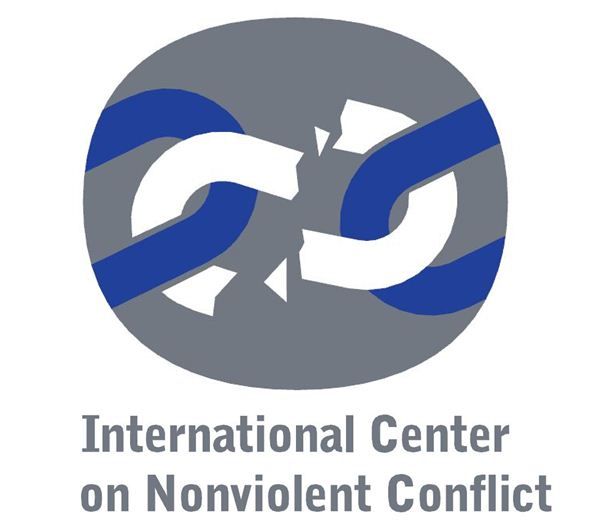You are here
Serbia
Analysis of a selection of predominantly nonviolent struggles from Russia 1905 to Serbia 2000, arguing against ‘the mythology of violence’. Some of the case studies are standard in books on civil resistance, others – for example the 1990 movement in Mongolia – less familiar. Each chapter has a useful bibliography. The book arose out of a 1999 US documentary television series ‘A Force More Powerful’, now available on DVD, and therefore includes, in the more recent cases, information from interviews.
Describes explicit strategies developed in both Serbia and Ukraine to increase costs of repression and reduce the willingness of the security forces to resort to violence. By combining deterrence and persuasion the organisers were able to avert major repression in 2000 and 2004.
published in English, Spanish and Serbian since 1994.
based on interviews with 60 people and includes photos and map of Belgrade.
Examines waves of change in 11 former communist nations, from 1989-1992, and the electoral defeat of authoritarian rulers from 1996 to 2005 in Bulgaria, Slovakia, Serbia, Georgia and Ukraine. This volume looks in particular at issues of transmission and the role of transnational and international actors, with a particular focus on the role of the EU. The final section discusses the conundrum posed by political developments in Russia, and also Belarus and Kyrgyzstan. Individual chapters are also cited under particular countries.
Discusses electoral defeats of authoritarian leaders from 1998 to 2005 (Slovakia, Croatia, Serbia, Georgia, Ukraine and Kyrgyzstan), but also unsuccessful movements in Armenia, Azerbaijan and Belarus. Analyses local and international actors and draws comparisons with other parts of the world.
Examines women’s resistance to war in many parts of the world, including Sierra Leone, Colombia and Gujarat, India. It also covers women’s cooperation across enemy lines in the former Yugoslavia and in Israel/Palestine, and resistance in the west to imperialist war, and develops theoretical questions about gender and militarism. See also: Cockburn, Cynthia , Women in Black: The Stony Path to “Solidarity” In Clark, People Power: Unarmed Resistance and Global Solidarity (A. 1.b. Strategic Theory, Dynamics, Methods and Movements)London, Pluto Press, 2009, pp. 156-163
This document was developed by the leaders of the Otpor movement, which inspired civil resistance against Milosevic in Serbia in the 1990s. It examines a strategic approach to nonviolent struggle presented in four thematic sections: definition and analysis of the framework of nonviolent struggle; elaboration and planning of the struggle; the techniques of nonviolent combat; and measures to resist repression.
Updated story of Radio B92 to 2004.
Interviews activists from Georgia, Ukraine, Azerbaijan and Belarus, as well as Serbia.
Examines post-1945 history of Yugoslavia and causes of its breakdown. Notes emerging feminist peace and ecological movement in the 1980s and the role of women in ongoing opposition to the war, including Serbian women demonstrating against the war with Croatia and demanding return of their husbands and sons.
Argues that while most studies focus on grassroots movements, elites – especially security services – are crucial in determining whether movements reach a ‘tipping point’. Illustrates argument by comparing two ‘failed revolutions’ (Serbia 1996-97 and Ukraine 2001) with two ‘successful revolutions’ (Serbia 2000 and Ukraine 2004-2005). [Compare with Binnendijk; Marovic, Power and persuasion: Nonviolent strategies to influence state security forces in Serbia (2000) and Ukraine (2004) (D. II.1. Comparative Assessments) above.]
The book examines how contemporary movements are using strategic nonviolent action to promote social change, covering a range of protests including climate change, immigrant rights, gay rights, Occupy and Black Lives Matter. The authors argue that nonviolent uprisings are becoming more common than violent rebellion, and look back to twentieth century antecedents in the Indian Independence and US Civil Rights movements, examine the nature of effective strategy and discuss organizational discipline. Their analysis includes the Arab Spring, but notes its discouraging implications.
First section includes contributions from Slovakia, Croatia, Serbia, Georgia and the Ukraine. Second section is comparative discussion on range of issues by authors including Valerie Bunce and Sharon Wolchik, Taras Kuzio and Vitali Silitski.
Examines role of women’s organizations in civil wars in former Yugoslavia and Sri Lanka.
Similar material is contained in: Ilic, Vladimir , Otpor - An Organization in Action , 2002, pp. 54 .
By examining the wars in Rwanda, in the former Yugoslavia, across the Middle East and in the former Soviet Union, Kaldor discusses the elements and dynamics of structural violence that determined the nature of these wars. She argues that these wars were predominantly determined by military and criminal factors, as well as by the presence of an illegal economy and human rights’ violations. She also argues that the underlying causes of these conflicts lie in the relationship between military and civilian victims, and in the changed perception of threat by the Western powers.
Examines the leading role of youth organizations – Otpor in Serbia (2000), Kmara in Georgia (2003) and Pora in Ukraine (2004) – and conditions for success, including training, western technical and financial assistance, choice of strategies and response of authorities.
Based on interviews with more than 1,000 participants in the 1996-97 protests.
Chapter 24 – ‘Toppling Milosevic from Budapest’, pp. 298-312 – covers Otpor demonstrations in 2000, but focuses on role of outside powers in toppling Milosevic and ensuring TV coverage.
Marovic, who was prominent in the student resistance to Milosevic in Serbia, provides a guide to planning a campaign in stages, and suggests exercises for each stage.
Reviews development of Yugoslav feminism from 1978 and notes strains created by vigils against the war in Croatia and later in Bosnia. See also: Women in Black, Compilation of Information on Crimes of War against Women in ex-Yugoslavia – and Actions and Initiatives in their Defence Belgrade, Women in Black, , 1993
Former Otpor activists assess its role and criticism made of the group. Accompanied by critical reflections on ‘Serbia eight years after’ by Ivana Franovic (pp. 35-38).
The book discusses what factors encourage or undermine nonviolent discipline, including the reactions of the government and the way the movement is itself organised.
Drawing on his own experience with the Otpor movement in Serbia and an analysis of numerous nonviolent struggles, the author shows how it is possible to start a democratic nonviolent opposition to a dictatorship, to structure it and to guide it to victory.
Popovic and his student friends formed Otpor, that developed into the movement that forced the dictatorial President Milosevic in Serbia to accept defeat in the 2000 election. Since then Popovic has advised civil and democratic movements around the world . In this book he provides suggestions and strategies for organizing nonviolent protests, for example how to gain favourable media coverage and find the right allies.
Popovic, an activist against the Milosevic regime in Serbia in the 1990s, went on to find CANVAS, which has offered advice and nonviolent training to activists in former Soviet states and other parts of the world, including Egypt before Tahrir Square and Syria. The book emphasizes the role of CANVAS (but does not address criticism of its role) and foregrounds the author's own experiences and interpretation of nonviolent action. It covers many varied campaigns with examples of how to mobilize successfully and use humour and imaginative forms of protest. It also addresses how to make oppression 'backfire' and the need to persevere in one's effort after apparent success. Written for activists rather than for scholars of nonviolence.
An abbreviated and slightly modified version of Sharp’s general argument in The Politics of Nonviolent Action. Includes 23 brief case studies of campaigns from the Russian Revolution of 1905 to the Serbian people power of 2000 (some written by Sharp’s collaborators: Joshua Paulson, Christopher A. Miller and Hardy Merriman).
Specifically on Otpor’s demonstrations at police stations to mark the arrest of activists.
A survey by one of the major theorists of social movements, that includes some reference to the role of civil resistance.
See especially pp. 263-318 on formation of united opposition and mass protests from March 1996 to February 1997. Account goes up to 1998.
(see also Thompson, Democratic Revolutions: Asia and Eastern Europe (A. 1.b. Strategic Theory, Dynamics, Methods and Movements) , pp. 84-97).
Analysis of Milosevic regime and reasons for the October 2000 uprising, plus brief reflections on links between stolen elections and the democratic revolutions in the Philippines 1986, Madagascar 2002 and Georgia 2003. Useful references to other literature.
A Guide to Civil Resistance
Volume One
Volume Two
 The online version of Vol. 1 of the bibliography was made possible due to the generous support of the International Center on Nonviolent Conflict (ICNC). ICNC is an independent, non-profit educational foundation that develops and encourages the study and use of civilian-based, nonmilitary strategies aimed at establishing and defending human rights, democratic self-rule and justice worldwide.
The online version of Vol. 1 of the bibliography was made possible due to the generous support of the International Center on Nonviolent Conflict (ICNC). ICNC is an independent, non-profit educational foundation that develops and encourages the study and use of civilian-based, nonmilitary strategies aimed at establishing and defending human rights, democratic self-rule and justice worldwide.
For more information about ICNC, please see their website.
 The online version of Vol. 2 of the bibliography was made possible due to the generous support of The Network for Social Change. The Network for Social Change is a group of individuals providing funding for progressive social change, particularly in the areas of justice, peace and the environment.
The online version of Vol. 2 of the bibliography was made possible due to the generous support of The Network for Social Change. The Network for Social Change is a group of individuals providing funding for progressive social change, particularly in the areas of justice, peace and the environment.
For more information about The Network for Social Change, please visit their website.










 esistance.info
esistance.info

